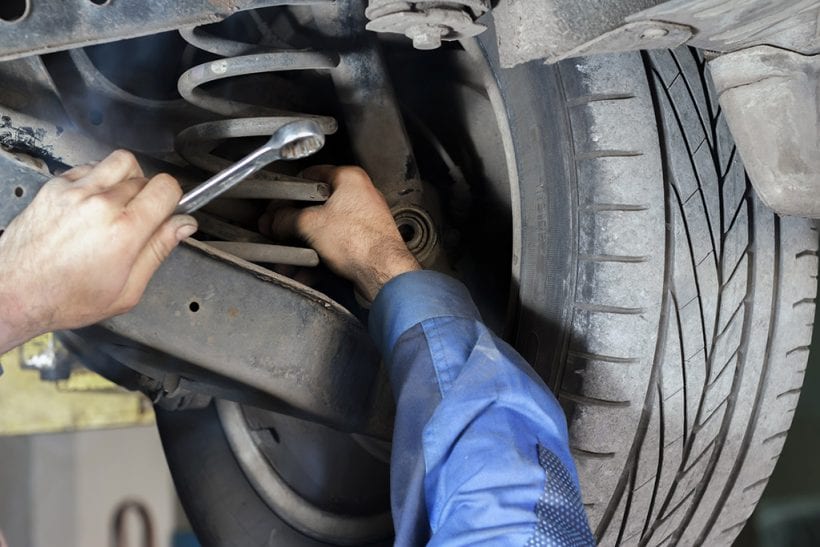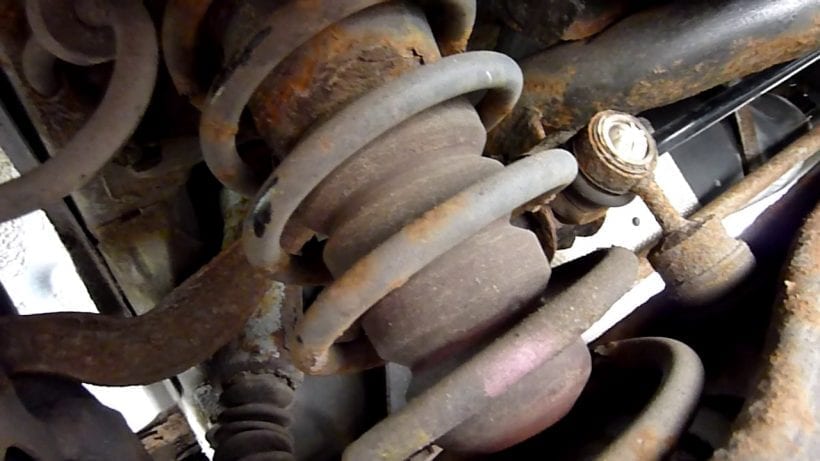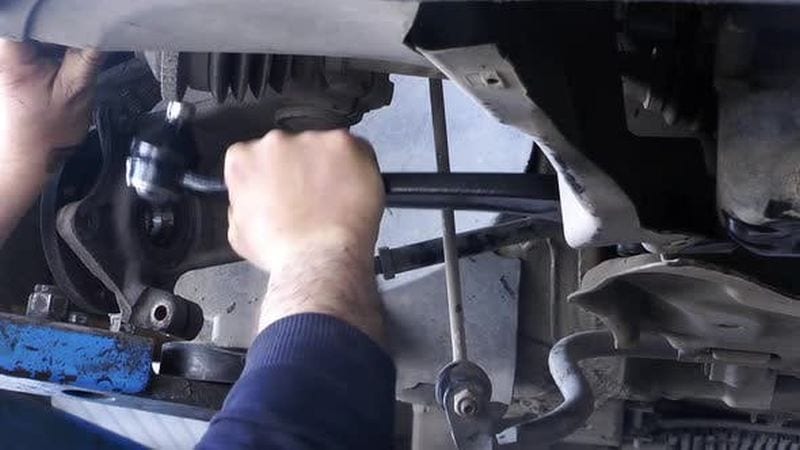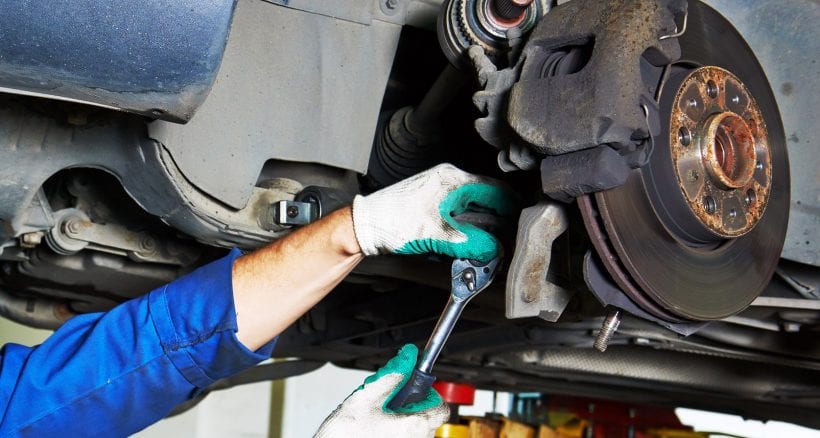Compared to brake rotors, windshield wipers, spark plugs, and other car components that break easily and require regular replacement, shock absorbers tend to fly under the radar and get ignored for months. However, as crucial parts of your vehicle’s suspension system, shock absorbers support its entire weight, so it’s normal for them to wear down after a while. The suspension systems on modern cars are becoming more and more resilient and we’re looking at longer lifespans for shock absorbers. Still, every once in a while, it pays off to watch out for these subtle signs and repair your car’s suspension before it starts to affect your safety and driving experience.

Manufacturer’s advice
Most manufacturers recommend that you replace your original shocks after 50,000 miles. However, that’s a general number that may not apply to your vehicle. Depending on your car, driving conditions, and driving style, you may have to replace your shocks more or less often. For example, if you only use your car for occasional rides on smooth city roads, your suspension will probably be fine until the 100,000-mile mark and even beyond that. However, if you often drive your car on bumpy country roads or use it to transport heavy loads, the lifespan of your shock absorbers will decrease and you’ll need to replace them sooner. Worn shocks are easily detected during a routine visit to your car mechanic but even before that, your suspension will show signs of wear.
Signs your shock absorbers are wearing out

If something has been feeling “off” about the way your car drives lately, pay more attention to these things:
- The steering feels stiff and you get a poor steering response, especially when you’re turning. If you feel like the car is drifting or pulling around turns, your suspension system might be failing you.
- The general riding experience feels rough. Every time you hit a bump in the road, you feel it reverberate in the entire car and sometimes you even feel the car bouncing as you drive.
- Your car doesn’t respond immediately to brakes and you feel it lurching forward when you brake quickly.
- One corner of the car sits too low when you’re on an even surface. Provided you don’t have a deflated tire, this could indicate a damaged spring. One way you can quickly check this is by pushing down on the trunk several times. If the car keeps bouncing up and down repeatedly and makes a creaking noise, it’s time to upgrade the suspension parts.
- Worn-out shock absorbers are also visible to the naked eye. Have a look under your car and see if there’s a film of wet oil covering the shocks. If there is, your suspension is clearly damaged and needs replacement.
An important thing that every driver should know is that the car suspension rarely breaks suddenly. Your car won’t drive flawlessly one day and then show all the signs above in the next – unless you’ve been in some kind of accident. According to the experts at Pedders, shock absorbers become damaged over long periods of time, so the signs will be very subtle at first. By the time you notice clear discomfort when driving over a bump and you feel insecure about braking abruptly, your suspension is probably in pretty bad shape, and you should schedule a visit to the service shop.
For more information about car repair be sure to check out Natrad Autocare.
Your car’s suspension isn’t just for comfort, so don’t wait too long to repair it

Many drivers assume the car suspension is only there to improve the ride quality and it’s true that this is one of its main functions. After all, the good suspension is what makes the difference between a smooth ride and a bumpy one. However, the role of car suspension goes much further than that. It also plays an important part in the vehicle’s overall safety by improving control and maneuverability.
Did you know that a worn-out car suspension can slow down brake time by 20%, which increases the risk of a collision considerably? Moreover, driving with damaged shock absorbers can make tight curves more dangerous and if you add additional risk factors such as slippery roads, then an accident becomes much more likely.
Although a car with a damaged suspension still works, that doesn’t mean it’s safe for driving. In time, it will affect your vehicle’s performance, and not even race driver reflexes can make it better. For best results, experts recommend replacing front and rear shock absorbers in pairs to prevent handling issues. And, since you’re there, you might want to consider additional repairs, such as brakes, suspension bushes, and springs. Even if this may keep your car in the service shop for a day or two, your car will drive like new afterwards and you’ll feel better knowing that you’re safer on the road.
After doing all these replacements, you can generally expect your car to drive smoothly for another 100,000 miles or so, depending on the factors mentioned in the beginning. However, if you want to feel extra safe, you could ask your mechanic to inspect the suspension before a long road trip.
Last, but not least, to increase the lifespan of your suspension, reduce speed when driving on bumpy roads and avoid transporting heavy loads if your car wasn’t designed for this. Also if you’ve been in an accident, no matter how minor, always ask your mechanic to inspect the suspension for damage to avoid higher repair costs in the long run.

